
Date: July 6, 2019
Location: Lat: 35.73515°, Lon: -74.81225°
Dive Depth Range: 298 - 445 meters (978 - 1,440 feet)
Access Dive Summary and ROV Data
During Dive 14 of the Windows to the Deep 2019 expedition, NOAA’s remotely operated vehicle (ROV) Deep Discoverer, also known as D2, explored cold seeps arrayed along a ridge located about 62 kilometers (39 miles) offshore Bodie Island, North Carolina. These methane seeps had never before been visited by autonomous, remotely operated, or human-occupied vehicles, and scientists were excited to watch as D2 made new discoveries during its progress up the ridge. For the full story, read this mission log. Video courtesy of the NOAA Office of Ocean Exploration and Research, Windows to the Deep 2019. Download larger version (mp4, 90.4 MB).
Today’s dive took place about 62 kilometers (39 miles) offshore of North Carolina’s Bodie Island. Our target for the day was an area of gas bubbles rising from the seafloor, which indicated a seep site. The site was discovered using multibeam sonar data collected by NOAA Ship Okeanos Explorer during previous expeditions, which was analyzed by researchers at Mississippi State University and the U.S. Geological Survey, who proposed the dive. Overnight multibeam mapping during our current expedition confirmed active bubble plumes in the water column. The target was also a potential site for cold-seep associated features including authigenic carbonate rock (produced as methane is processed by microbes), bacterial mats, other chemosynthetic community members, and deep-sea corals and sponges.
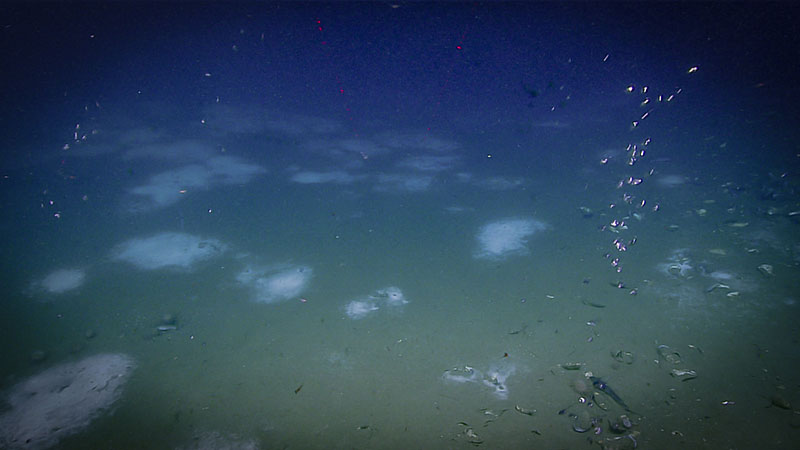
Bubble plumbs rising from the seafloor, such as those seen here, confirmed the presence of an active seep site. The areas of white coloration seen on the seafloor are Beggiatoa bacterial mats. Image courtesy of the NOAA Office of Ocean Exploration and Research, Windows to the Deep 2019. Download larger version (jpg, 1.1 MB).
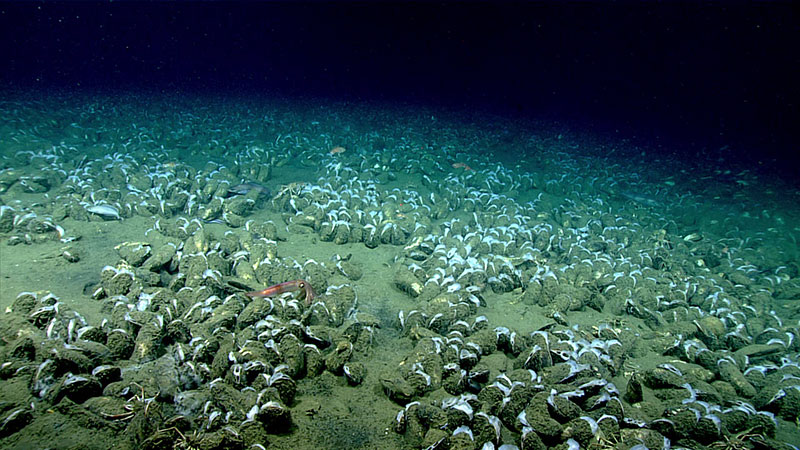
A large mussel bed was associated with the site. Image courtesy of the NOAA Office of Ocean Exploration and Research, Windows to the Deep 2019. Download larger version (jpg, 1.6 MB).
It proved to be a very active site, beginning with a splash of color from an abundance of shrimp and other organisms in the water column, as we approached the seafloor. Multiple areas with active methane bubble plumes rising towards the surface soon confirmed that this was an active seep site. We found seep-associated bacterial mats, as well as a sizable mussel bed thought to be composed of Bathymodiolus childressi, with live mussels growing on and around carbonate rocks; some with bacteria growing on them as well. There were a number of other organisms around the mussel beds and other seepage areas, including spider crabs, quill worms, blackbelly rosefish, eelpouts, seastars, and anemones. We also encountered an area of large carbonate boulders with a few impressive colonies of the coral Lophelia pertusa growing at the top. We ended the dive with a midwater transect through the deep scattering layer and ended the transect surrounded by small lanternfish. All in all, this was a very interesting and eventful dive!
To learn more about this seep site and its discovery, take a look at this mission log by the researchers who proposed this dive.
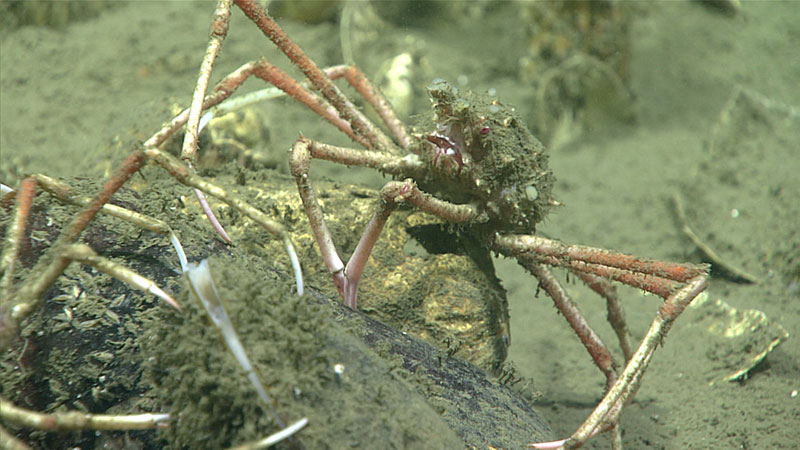
A spider crab was imaged during Dive 14 of the Windows to the Deep 2019 expedition. Image courtesy of the NOAA Office of Ocean Exploration and Research, Windows to the Deep 2019. Download larger version (jpg, 1.1 MB).
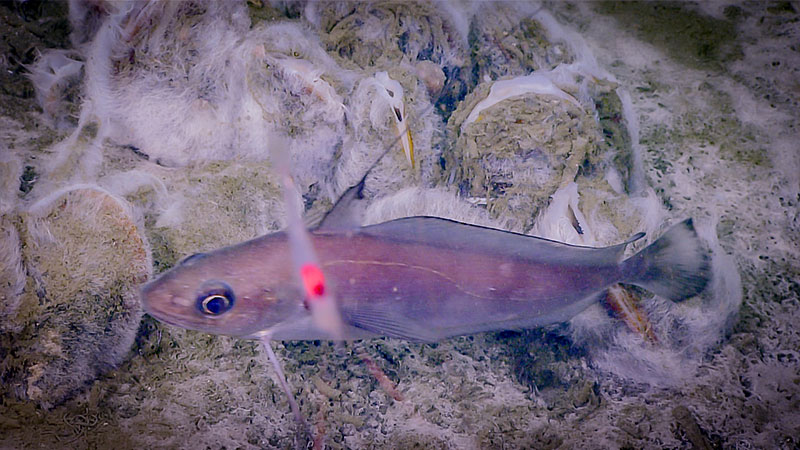
A fish is seen among bacterial mats. Image courtesy of the NOAA Office of Ocean Exploration and Research, Windows to the Deep 2019. Download larger version (jpg, 1.5 MB).

Location of Dive 14 on July 6, 2019. Download larger version (jpg, 2.2 MB).
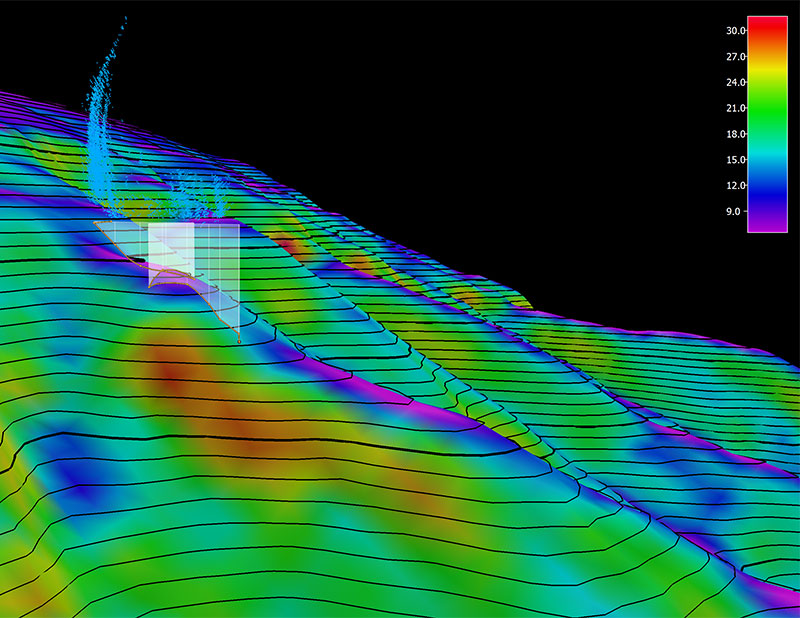
The remotely operated vehicle track for Dive 14, shown as an orange line with a white curtain. Scale is water depth in meters. Download larger version (jpg, 3.2 MB).